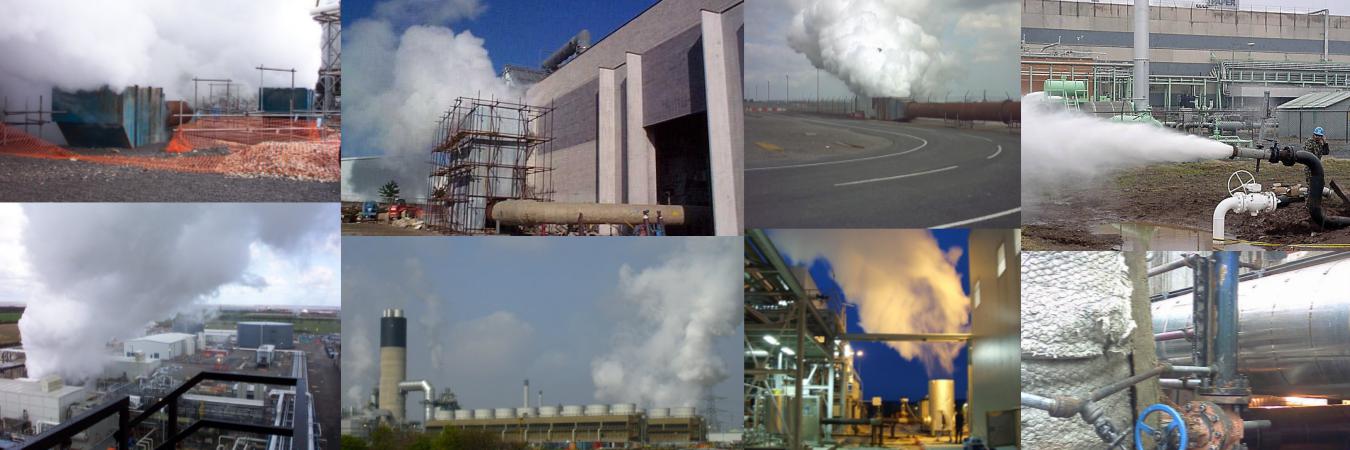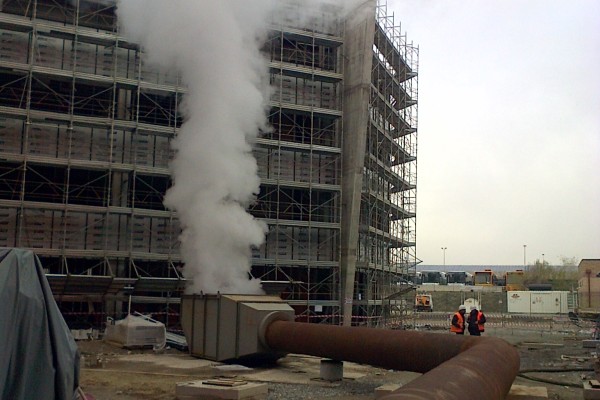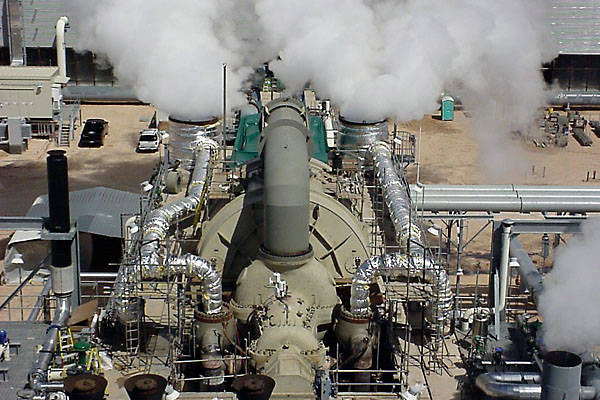
STEAM SYSTEM BLOWINGS
Steam System Blowings are preparatory cleaning method at the start up of steam turbines. Blowings aim at removing construction scales, welding slugs, sand, dust, oil and rust from steam systems before starting them up. These impurities, if present in the system, could be dragged by the steam flow, compromising the turbine integrity and adversely affecting the regular functioning of valves and equipment.
GlobChem performs three different types of blowings:
- Continuous Steam Blowing (Low-Pressure Steam)
- Discontinuous Blowing (Medium Pressure Steam)
- Air blowing
These three methods have similar results. The choice among them is determined by utilities availability and economical aspects.
Continuous steam blowing (Low-Pressure Steam)
This kind of blowing was developed in parallel with the construction of combined cycle power plants. It requires that the gas turbine is in service and produces enough steam to reach the blowing conditions foreseen in the engineering phase.
The main characteristics of this method are:
- Very effective
- Reduced times of execution
- Reduced noise
- Ability to produce power
Low-Pressure Continuous Steam Blowing results in dynamic pressure along the tubes at least 20% above those in operational conditions (DFR>1,2).
In these conditions, potentially damaging particles are dragged and expelled from pipes.
To check the progress of the operations, especially finished metal plates (“targets”) are inserted in the last part of the piping system to be exposed to the steam flow.


Discontinuos Blowing (Medium Pressure Steam)
The boiler is gradually pressurized until it reaches the conditions specified in the engineering. As the pressure is reached, the quick opening valve is open and the steam inside the system is released through the provisional lines and the silencer. The steam flows at hypersonic speed for a short amount of time. Discontinuous Blowing with Medium Pressure Steam produces significant thermal and mechanical shocks on systems, which remove scales from the inner surfaces of pipes. This kind of operation needs rated temporary piping, an accurate design of temporary systems (stress analysis), the use of quick opening valves and silencers. The length of the operation is related to the fouling conditions of plants.

